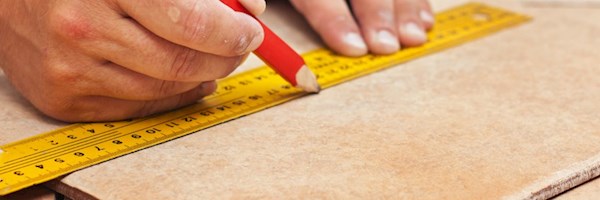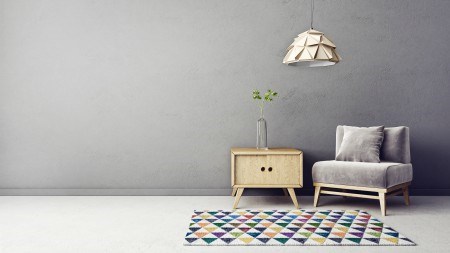It’s often tempting to forgo the experts when it comes to DIY home improvements, especially when there’s potentially time and money to be saved! But is laying new flooring something that an average DIYer can tackle and what potential mistakes should one be aware of if considering going this route?
Upgrading your flooring is a smart way of updating your home décor and giving your space a breath of fresh air. While it’s important to consider the overall look and style of potential flooring – be it hardwood, vinyl, or laminate – DIYers should also take into account the complexities and potential mistakes that DIY flooring could lead to if not planned or executed properly. Here are a few common mistakes one could make as well as how to avoid them:
- Not researching properly
As with all DIY ideas, proper planning and research is imperative before beginning a project. Re-doing your flooring is no exception so be sure to read up about what goes into removing existing flooring as well as what is needed once the process begins. Things to consider include what prep work and materials are needed to remove your existing flooring and to prep for your new flooring; whether your new flooring will need any additions over and above the floor itself such as a skirting or trim; as well as whether you need a transitional section if you are re-doing adjourning rooms. Be sure to research properly to make sure you are well prepped and equipped with the correct knowledge before progressing.
- Misjudging your level of ability
While some DIY ideas are easy to execute, others do require a fair level of skill and know-how, so avoid biting off more than you can chew skill-wise by assessing your abilities realistically. Conduct proper research as suggested above so you will be better informed as to what level of skill is required and whether you are up for the challenge as this will help prevent any costly mistakes or even a re-do later on down the line. Flooring can be tricky, but most manufactures will offer information on the level of skill required for each type of flooring. Take the time to familiarise yourself in this regard and then assess accurately whether you do actually need the help of a professional – either with the entire job or portions thereof, depending on your level of confidence in yourself.
- Opting for cheap
It’s not easy for anyone to turn down a bargain, especially with a high-priced item like flooring! That said, cheaper alternatives in this instance are definitely something to steer clear of. Flooring is a complicated product and needs to be of a good quality and hardy enough to withstand the constant foot traffic and general wear and tear. If you’ve done your homework, you should be able to spot where you can save a few pennies and where rather to invest a little bit more to ensure you’re left with something that withstands the test of time. Low quality, cheaper alternatives are bound to wear-through quicker, scuff or scratch easier and even lift if poorly manufactured, so bear this in mind when making your purchase.
- Not doing proper prep
Re-doing your flooring is a labour-intensive process and skimping on one step could have a long-lasting negative effect on steps later on down the line. It’s therefore critical that you take the time to correctly prepare the subfloor once you have removed your existing flooring. Make sure the subfloor has been properly flattened, smoothened out, cleaned and dried before moving on to laying your new flooring. Take the time to familiarise yourself as to what prep is needed for each style of flooring to ensure success.
- Not measuring properly
It should go without saying but taking the time to accurately measure the area you wish to re-floor could save you huge amounts of time, money and energy in the long run. Imagine getting half-way and realising you need more flooring only to find the supplier has run out or has discontinued the option you went for! To avoid this, ensure that you buy the correct amount of prep and installation materials as well as the correct amount of flooring for the area you are working with beforehand.
- Using the wrong products
As mentioned, DIY flooring can be a tricky and finicky process so adhering to the manufacturer’s instructions and recommendations as to what products to use in the re-flooring process as well as for aftercare is essential to ensuring your new floor’s longevity. Depending on which flooring option you go for, you may need – for example – a specific kind of adhesive or grouting and later on, specific cleaning products to avoid damaging the floor’s surface.
- Overlooking moisture and humidity
It’s worth mentioning the effect that moisture and humidity can have on flooring, especially during the installation process. Be sure to take this into account if you live in this type of climate. For example, moisture is an absolute killer when it comes to wooden flooring as it can cause the boards to warp during and even after installation. In this instance, don’t lay wooden floorboards too close to each other to give them space to expand if necessary.
- Ignoring aftercare instructions
As with most things, each kind of flooring has its own requirements when it comes to aftercare maintenance and cleaning. Be sure to research the instructions regarding the best methods and products for your type of flooring so that you don’t damage it unnecessarily and have to re-do the entire process.
Taking the time to get to grips with the complexity surrounding DIY flooring will only stand you in good stead when it comes to the quality of the installation as well as the longevity of the flooring itself. That said, no matter what option you choose, doing your research and making sure you’re up for the challenge will definitely ensure you’ll avoid these common mistakes and place you on solid ground, not only during installation, but in the years to come.







